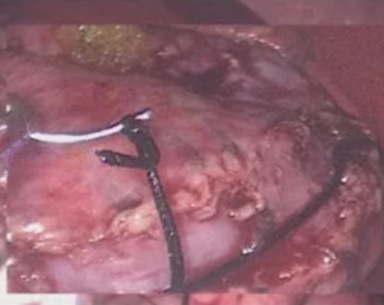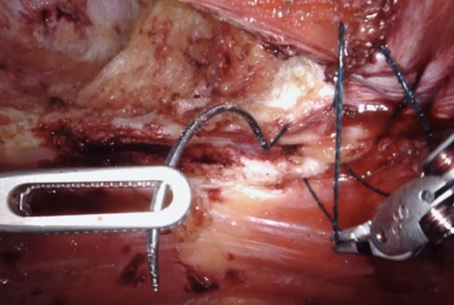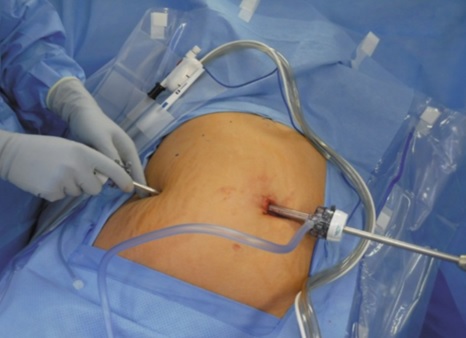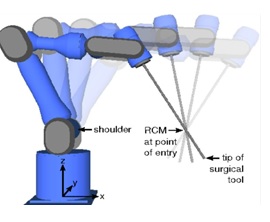Past events at MIOT
Robotic Surgery - Putting an End to Fear of Surgery
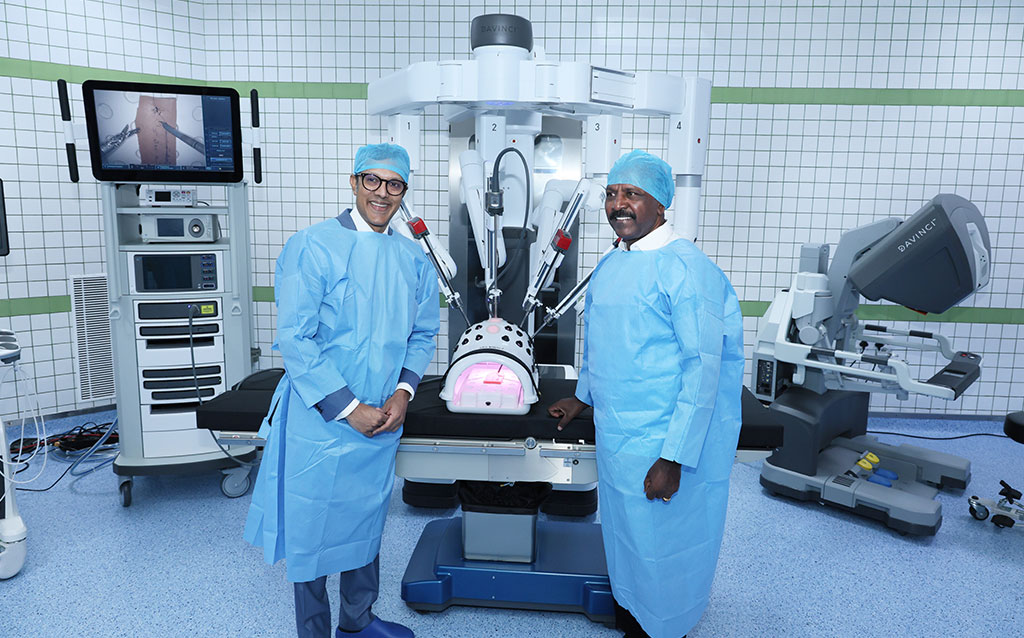
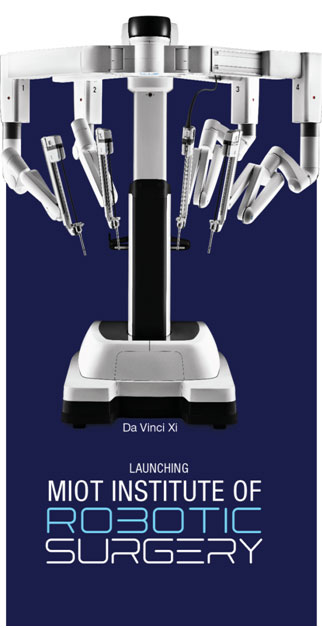 Robotic surgery is an advanced form of minimally invasive or laparoscopic (small incision) surgery in which surgeons perform the surgery using a computer-controlled robot, with the surgeon having complete control of the robotic system. This technology allows complex surgeries that require high precision to be performed safely without damaging surrounding tissues or organs. Robotic technology enhances precision, minimises surgical complications, and improves patient outcomes. This technology ensures a high level of safety for patients undergoing over 140 different types of surgeries.
Robotic surgery is an advanced form of minimally invasive or laparoscopic (small incision) surgery in which surgeons perform the surgery using a computer-controlled robot, with the surgeon having complete control of the robotic system. This technology allows complex surgeries that require high precision to be performed safely without damaging surrounding tissues or organs. Robotic technology enhances precision, minimises surgical complications, and improves patient outcomes. This technology ensures a high level of safety for patients undergoing over 140 different types of surgeries.
The enhanced safety of patients is further increased by the Robotics-Assisted Intraoperative Ultrasound System. The transducer of this advanced ultrasound system, positioned inside the body, provides high-resolution images with great anatomical details during surgery. These real-time images are captured from all angles with full robotic articulation. It provides greater accuracy and precision to ensure the identification of the entire tumour surface for complete tumour resection.
Concerning Factors of Surgery
No More Fear of Surgery: People often delay surgery due to concerns about safety, recovery, and regaining quality of life. This may worsen their condition and eventually lead to critical health issues. These fears can now be alleviated. MIOT’s robotic surgery technology enables surgeons to perform precise procedures with enhanced safety, gentle dissection, reduced blood loss, and faster recovery times. This technology minimises risks and ultimately leads to better patient outcomes.
The advancements include:
- Robotic mechanical wrists bend and rotate, mimicking the movements of the human wrist, allowing surgeons to operate in narrow spaces in the body that would otherwise only be accessible through open (long incision) surgery. The surgeon’s hand movements are scaled and translated into ultra-precise movements.
- The 3D HD camera, positioned on any of the four arms, can be placed within a few inches of the organ, enhancing flexibility for visualisation and enabling more precise dissection.
- The 10 times enlarged view enables MIOT’s experts to perform highly precise and accurate dissections. The above combination of vision and precision is beyond human capabilities.
- Firefly technology offers a remarkable advantage which cannot be seen with the naked eye. It involves injecting a dye into the patient, which helps distinguish abnormal tissue from normal tissue. This also enables surgeons to visually assess blood flow within the tissues.
- Robotics-assisted intraoperative ultrasound system helps surgeons locate and visualise anatomical abnormalities during surgery. The enhanced range of motion allows surgeons to access difficult-to-reach areas, such as the pelvis (lower abdomen) where the prostate or rectum is located. It helps in accurately identifying tumour location, depth and borders for distinguishing between tumour and normal organ.
What is the Difference Between Laparoscopic and Robotic Surgery?
Laparoscopy |
Robotic Surgery |
|---|---|
|
Less-Magnified 2D View
The surgeon manually controls the instruments and views the surgical site using a 2D camera.
|
10 Times Magnified 3D View
The surgery is performed with robotic tools and is aided by a binocular lens and a 3D HD camera.
|
|
No fatigue Filter
Due to the long surgery time, the surgeon may experience fatigue. |
Fatigue is Filtered Out
By sitting comfortably while performing surgery, the surgeons fatigue is filtered out. |
|
More Pain
The instruments are rotated during the procedure, which applies pressure on the incision point, resulting in more pain.
|
Minimal Pain
It is designed in a way that allows the robotic tools to rotate around the fixed point at the incision site. The remote centre technology prevents the side-to-side force applied during surgery, thereby minimising the damage to the body and reducing pain and scarring.
|
|
Difficult to Access Complex Locations
The laparoscopic ultrasound cannot reach difficult angles. |
Access Complex Locations
The surgeons can locate and visualise anatomical abnormalities during surgery with great precision. The transducer fully articulates to reach complex angles. |
|
Less Depth Perception
Unable to accurately assess the tumour’s depth. |
Better Depth Perception
The 3D HD camera and advanced ultrasound system enable surgeons to better understand the depth perception of the tumour. |
|
More Blood Loss
The risk of dissecting unintended blood vessels is higher with a less magnified view, resulting in greater blood loss. |
Less Blood Loss
The gentle and accurate dissection prevents dissecting the unintended small blood vessels, resulting in less blood loss. |
|
Chances of Failure Rate are More
With lower image resolution and reduced precision, the chances of failure are higher compared to robotic surgery. |
Enhances Patient Outcomes
Accurate dissection, complete tumour resection, minimal pain, and decreased risk of infection enhance better patient outcomes. |
How Does Robotic Surgery Score Over Laparoscopic Surgeries?
Robotic surgery is ideal for complex procedures that involve difficult-to-reach areas or carry a risk of damage to surrounding tissues. It is particularly suited for surgeries that are complicated or life-threatening, where precision and safety are crucial.
In general, robotic surgery makes all keyhole procedures safer and more precise, reducing overall costs for patients by minimising complications and enabling faster recovery compared to laparoscopy. Complex procedures that were not suited to traditional laparoscopy and would have to be performed in an open manner, can now be performed robotically and minimally invasively.
How is Robotic Surgery Performed?
The robotic surgical system consists of a surgeon console, patient cart, and vision cart. The surgeon console is equipped with hand controls and foot pedals, where the surgeon sits, controls and operates the robotic arms. The patient cart holds the robotic arms, which are positioned on the operating table according to the type of surgery. The surgical assistant stands next to the patient to change the endowrist instruments in the robotic arms as needed. The vision cart includes a monitor that displays the surgical site inside the patient’s body.
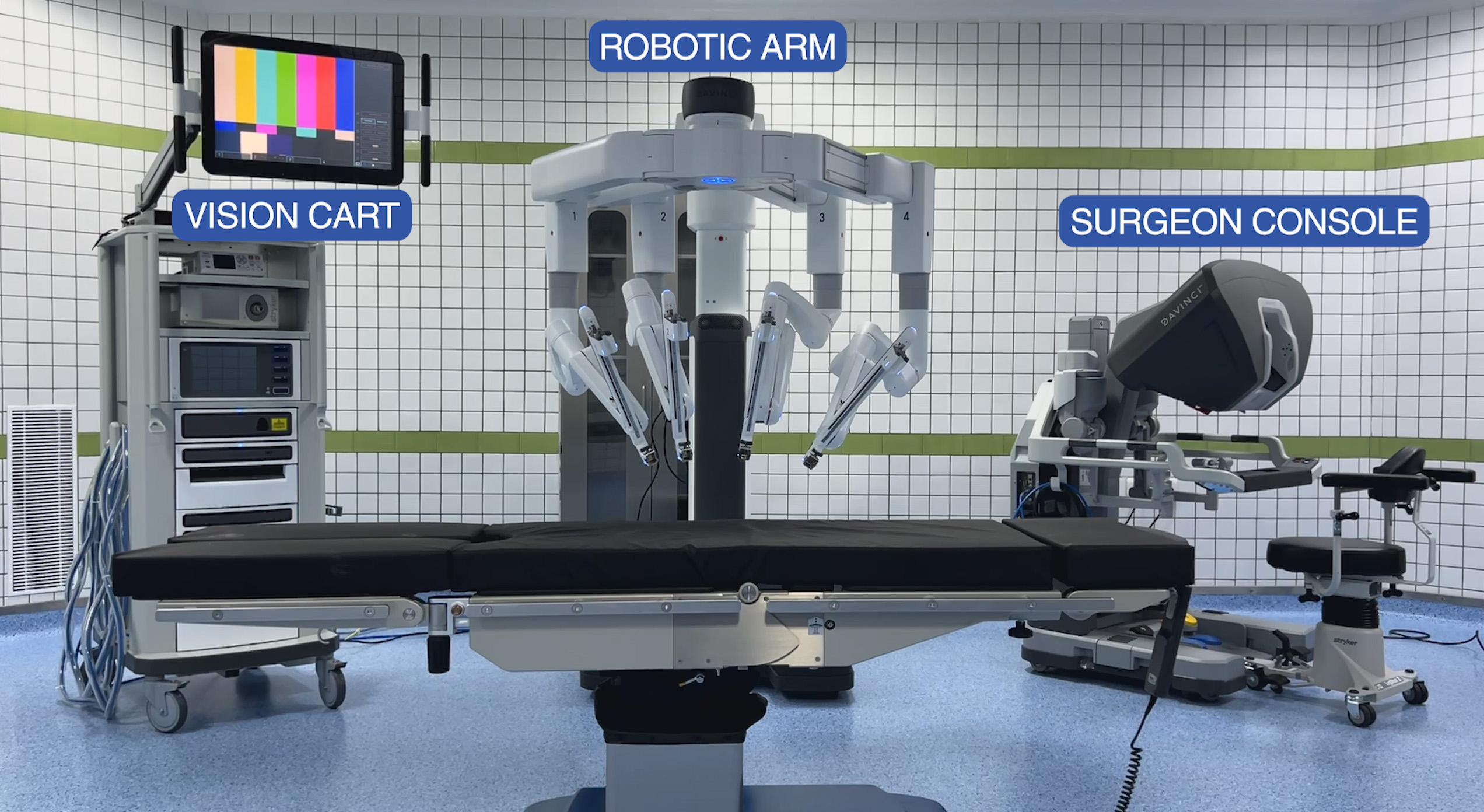
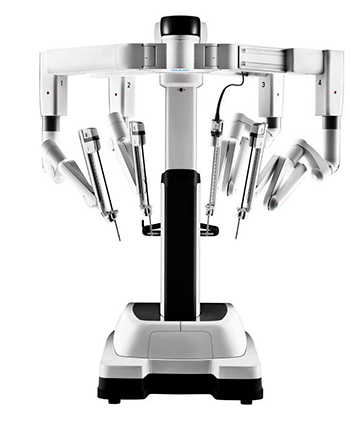
Patient cart
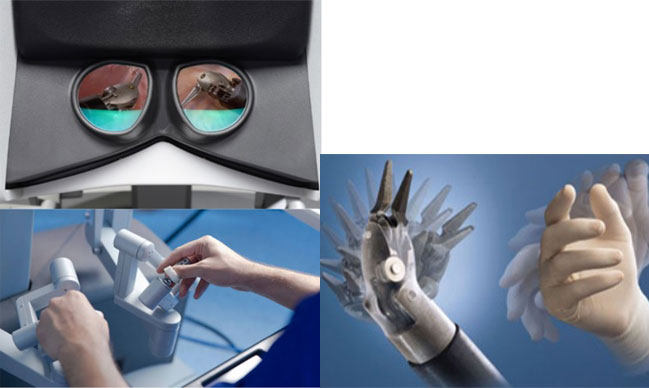
Endowrist instruments replicate the surgeon’s hand movements
Types of Surgeries Performed Using Robotic Surgery
- All major cancer surgeries in the chest and abdomen cavity
- All types of Oesophagus, Stomach, and Colorectal surgeries
- Nephrology (Kidney)
- Bariatric surgery
- Hepatopancreatico biliary
- Lung surgeries
- Urology (Urinary Bladder)
- Gynaecology (Hysterectomy)
- Head and Neck (Thyroid, Neck dissection, and Deep oral cavity tumour)
- Cardiac surgeries
- General surgery (Cholecystectomy and Hernia repair)
- Paediatric surgeries
MIOT’s Expertise in Robotic Surgery
Supported by a team of 250 dedicated full-time doctors, we work collaboratively to provide the best treatment for the patients. Now, with the addition of robotic surgery, we have further advanced our capabilities to enhance patient outcomes. Robotic surgery requires specialised training and experience. At MIOT, our surgeons are not only trained in this advanced technique but also have several years of experience with robotic systems. With their expertise, MIOT’s surgeons perform complex surgeries with exceptional precision, minimising risks, improving surgical outcomes, and contributing to faster recovery times. Overall, with MIOT’s Robotic Surgery, the patients experience:
- Safer surgery with high precision
- Low healthcare costs
- No complications
- Faster recovery times
- Better patient outcomes
- Minimal pain
- Reduced Blood loss
- No scar
- Shorter hospital stays
- A quicker return to quality of life




